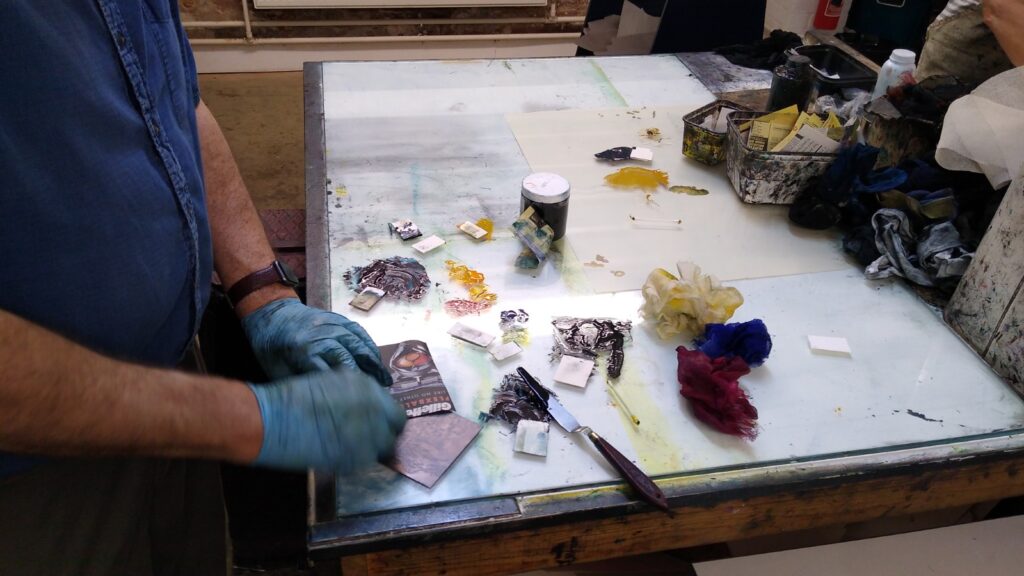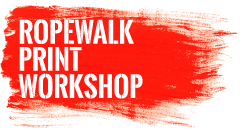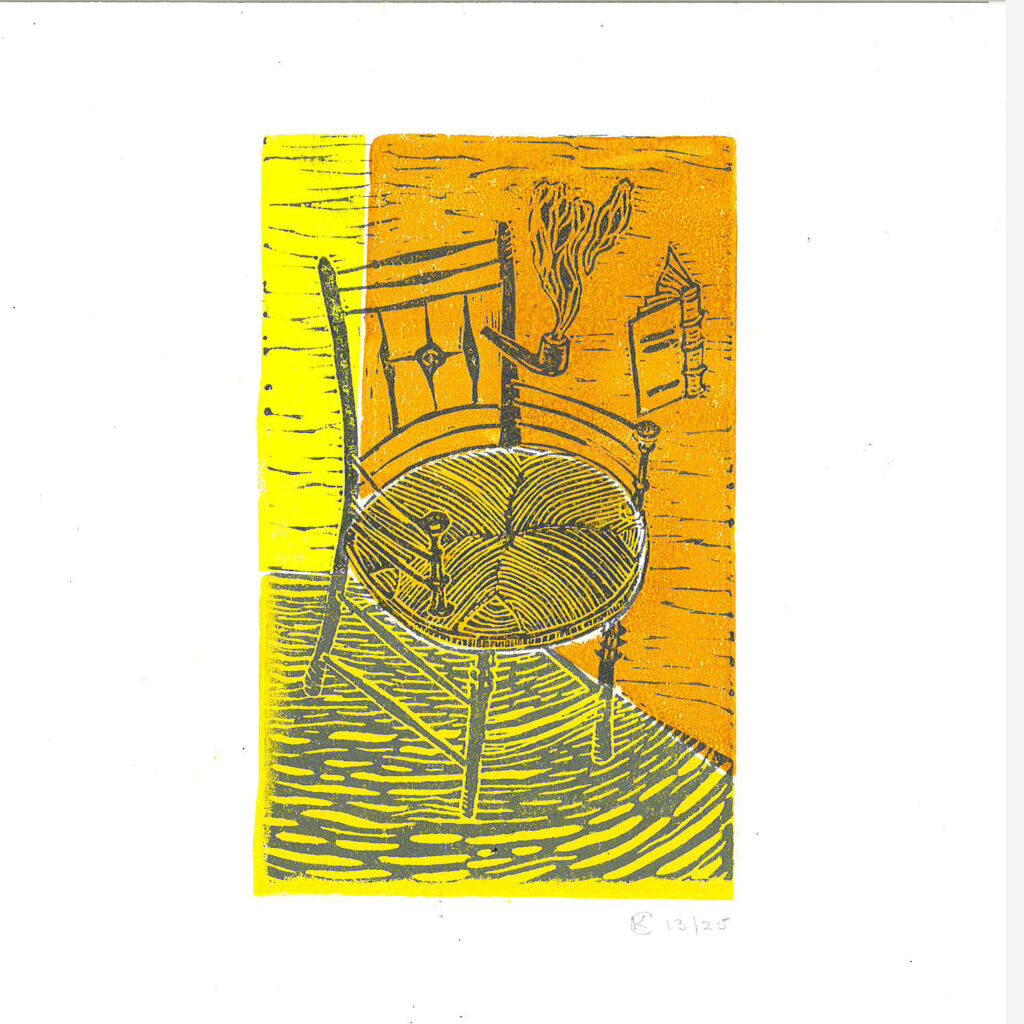
Printmaking is a traditional process of creating Art by transferring an image onto paper and other surfaces using a variety of methods, it has been with us for hundreds of years. Printmaking creates single or multiple prints from plates, blocks or screens.
The Ropewalk Print Workshop is a designated space set out to allow a group or individuals to work in a safe and structured way.
The Ropewalk open-access facilities are open to members to book either individually or as a group of 2 or more Anyone using the space follows the guidelines and advice from our Health and safety information. Allocated areas for each process in the workshop give ample room for individuals to work safely together (see current numbers).
Printmaking Techniques
Printmaking can be broken down into three basic techniques, Relief, Intaglio and screen print.
This division relates to how the ink is transferred from a print matrix (plate, block, screen) to the paper. All three create unique qualities to enhance your own personal style.
Relief
In relief printmaking, it is the surface of the plate that carries the image, which is transferred onto the paper. The areas that are cut away do not come into contact with the paper and therefore remain clear. The most common forms of relief printing are woodcutting and lino cutting. Both techniques use tools to remove the areas of the surface of the plate that are not required to print.
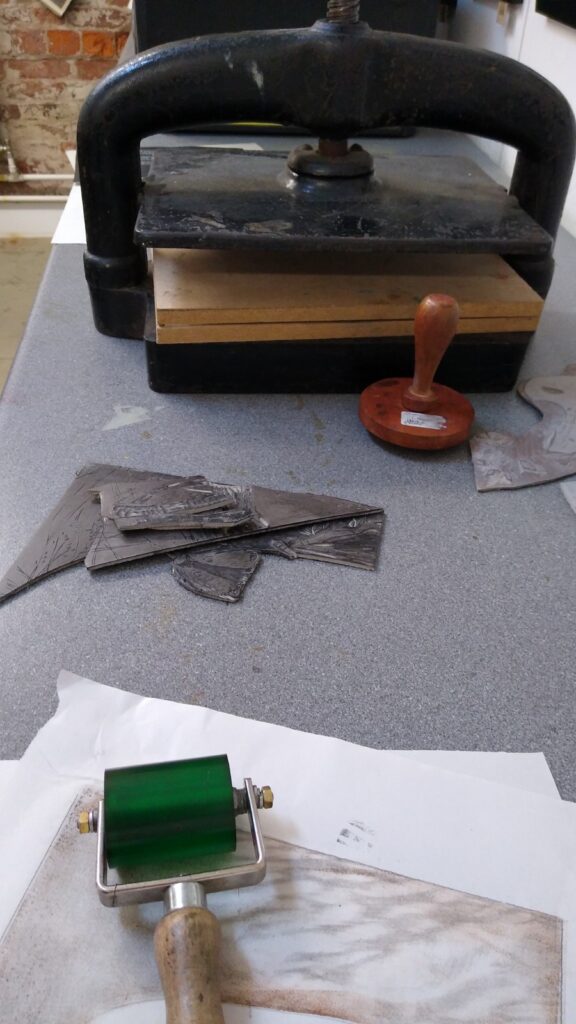
Intaglio
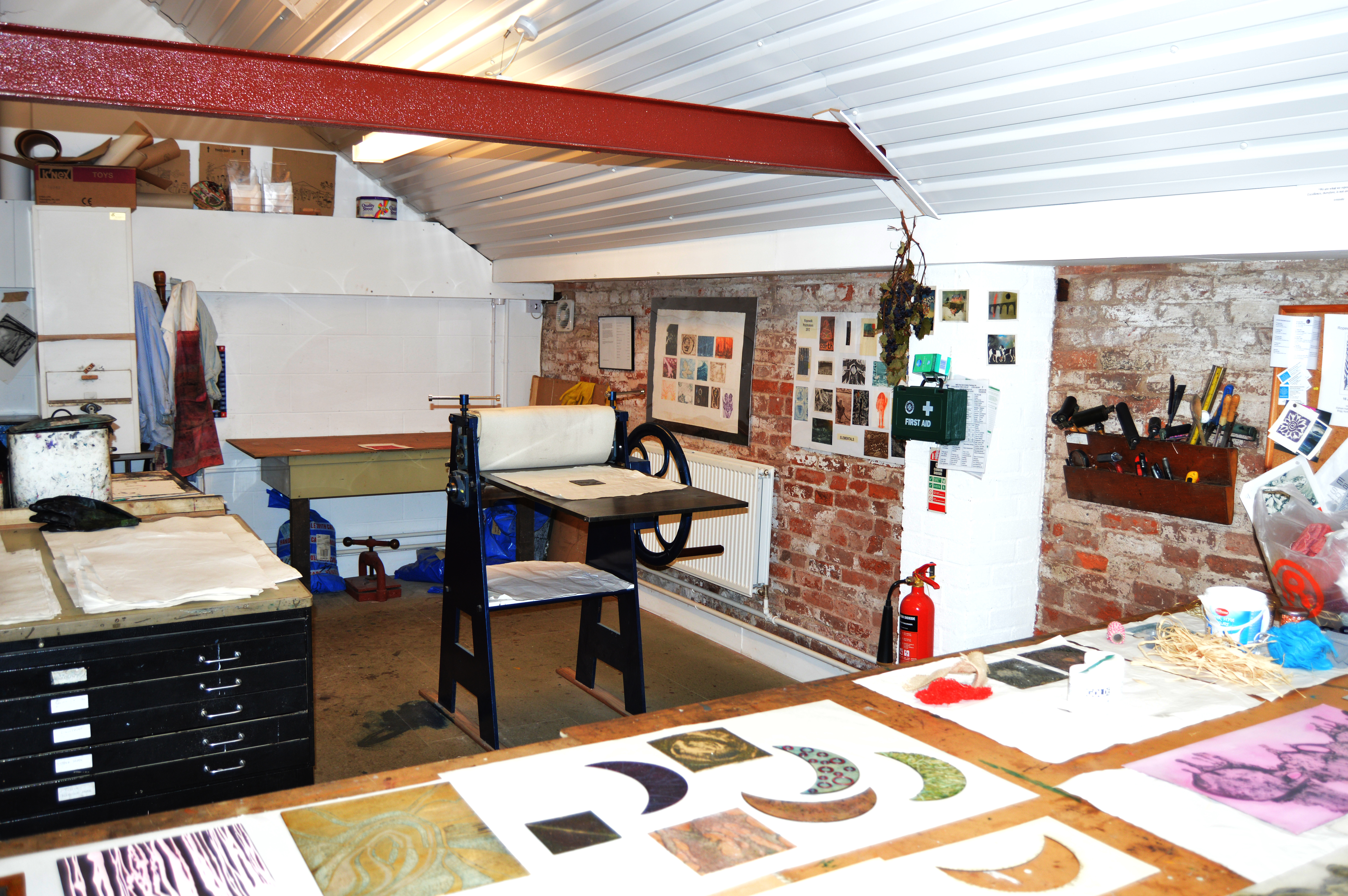
The term Intaglio (from the Italian ‘intaglaire’ meaning to carve into) covers many processes. An intaglio plate carries the ink in the recesses cut into the plate. Examples of the Intaglio process include engraving, etching, dry point, aquatint, mezzotint and collagraph. Intaglio printmaking can be divided into two basic categories, those that do and those that do not use acid to create the printing plate.
RPW use electro etch, Ferric Chloride and Copper sulphate, Nitric acid to etch metals i.e., steel, Zinc, copper and aluminium.
Screen printing
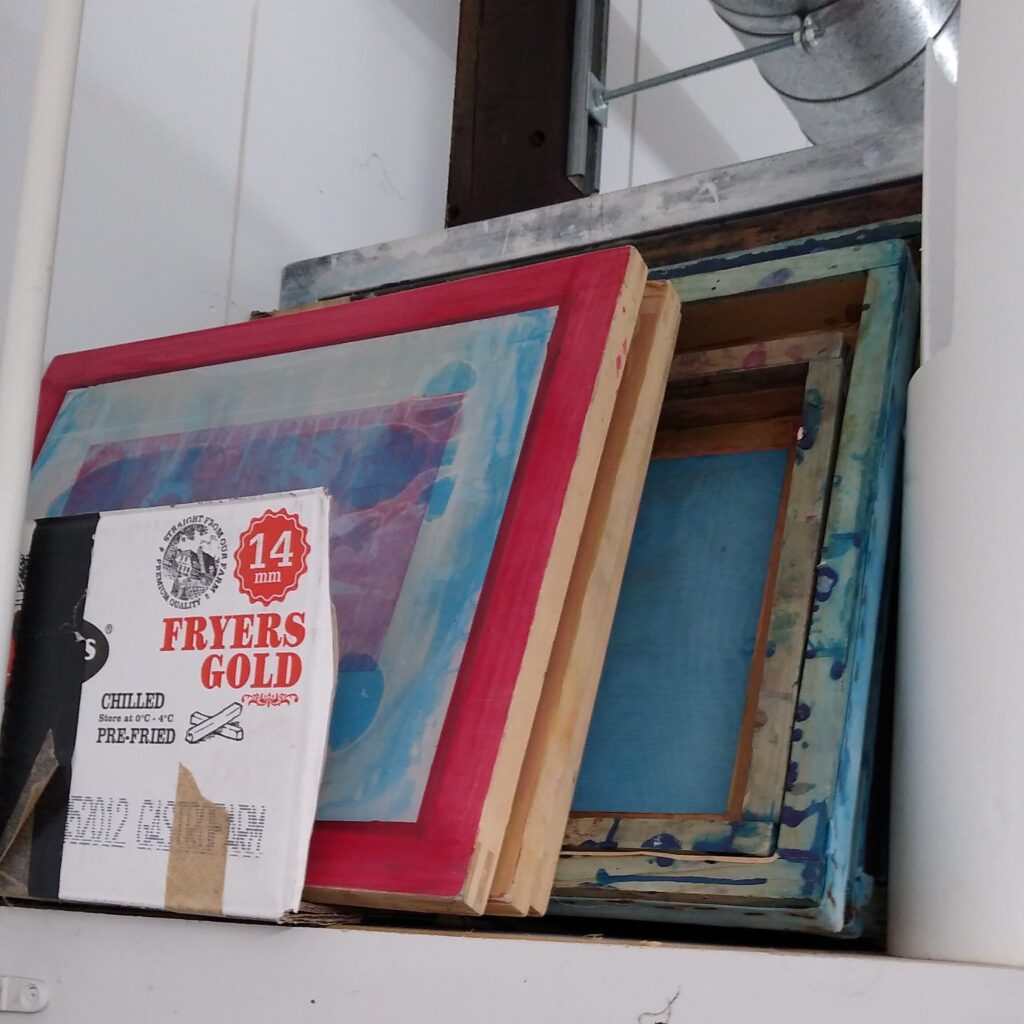
Screen Printing is one of the most direct methods of achieving multi-coloured images. The screen is rectangular frame over which is stretched silk, polyester or nylon or any other appropriate fine mesh material. The screen is blocked out in the areas that are to remain unprinted. A squeegee (a plastic or rubber blade) is pulls ink across the screen allowing the ink to penetrate the unblocked areas.
The Studio
The Workshop is a modest size based around a central large working table with screened booths and cushioned stools to seat up to 8 people safely and comfortably. additional side benching allows for separate working, inking or cleaning. Inking areas and process areas help to keep clean spaces away from dirty areas.
Studio Equipment
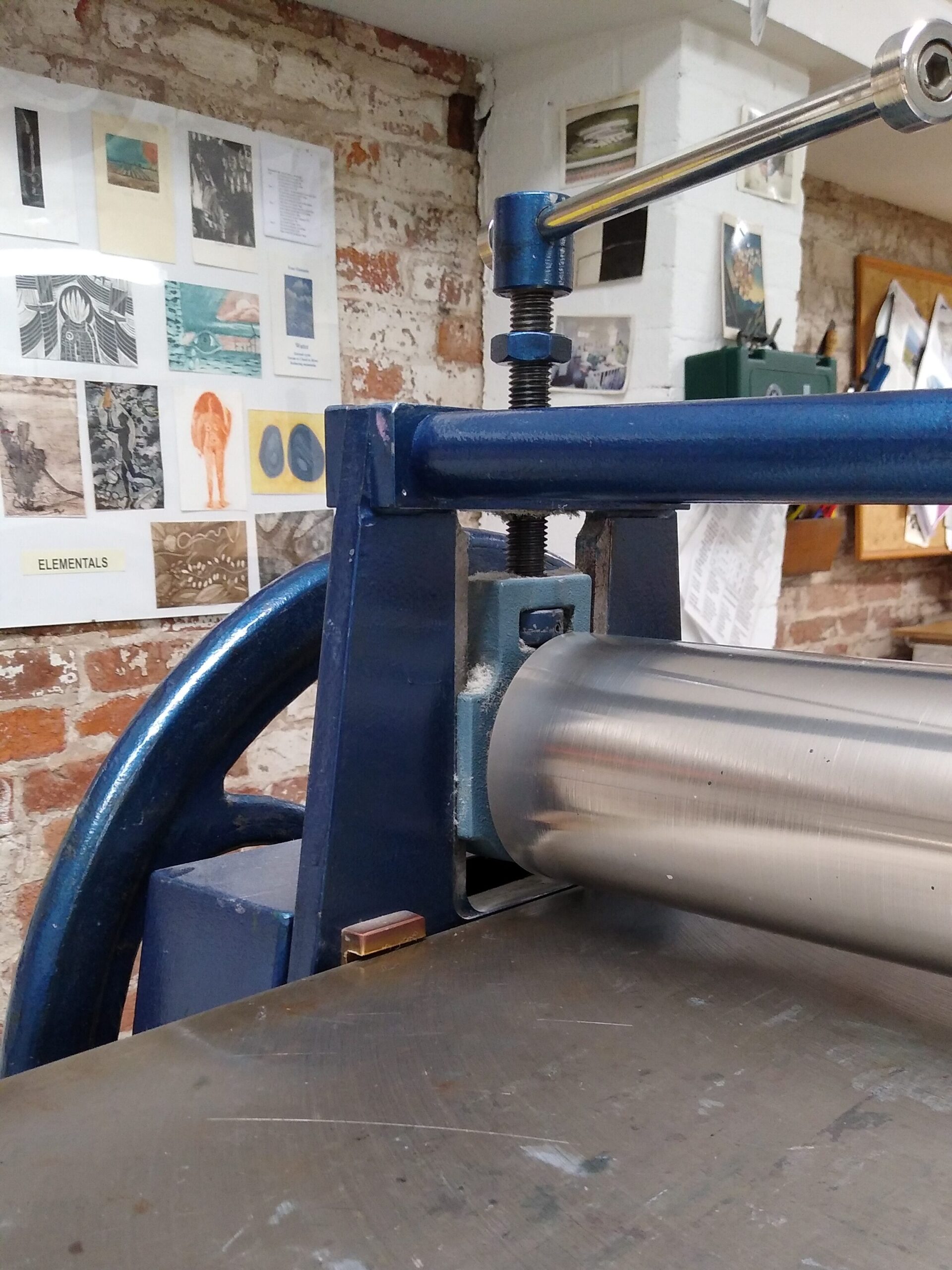
- Traditional Art Equipment Studio Etching Press. Bed size 48”x24” (1220×600)
- Art Equipment portable Press. Bed size 24”x12” (610×305)
- Nipping Press bed size 12”x10” (30×25)
- Hall Mark vacuum Screen Printing Bed. Max screen size: 30”x24” (60×75)
- Various Screens and screen wash available,
- Art Equipment Hot plate.
- Art Equipment aquatint booth.
- Various rollers.
- Large fume cabinet.
